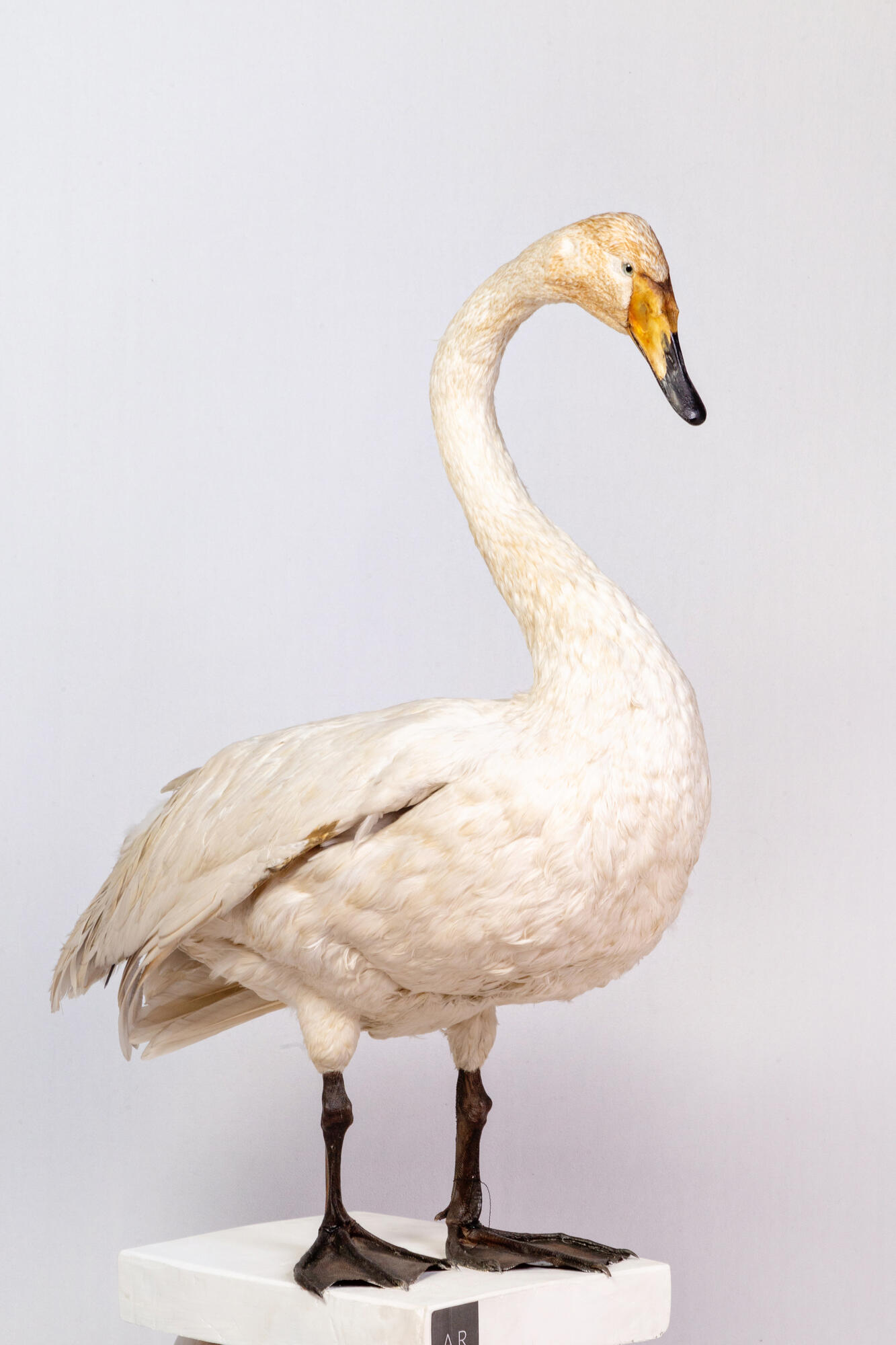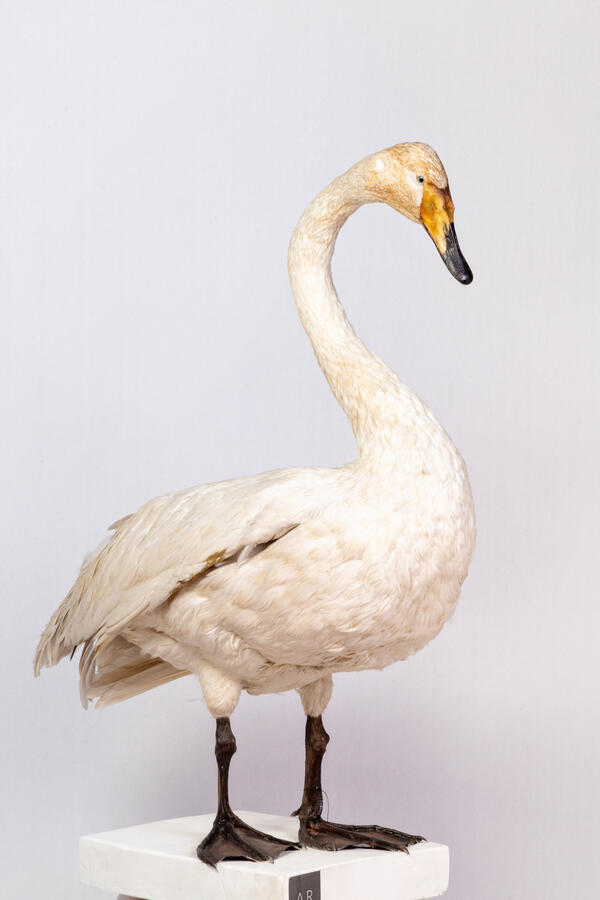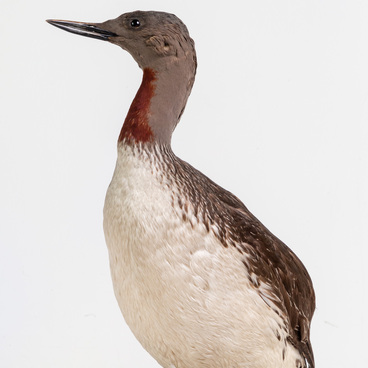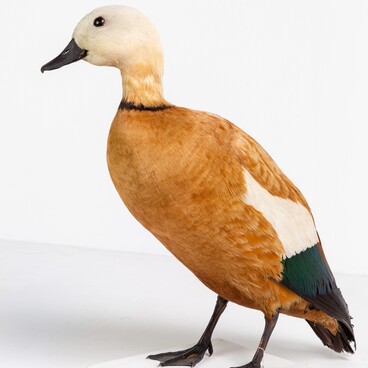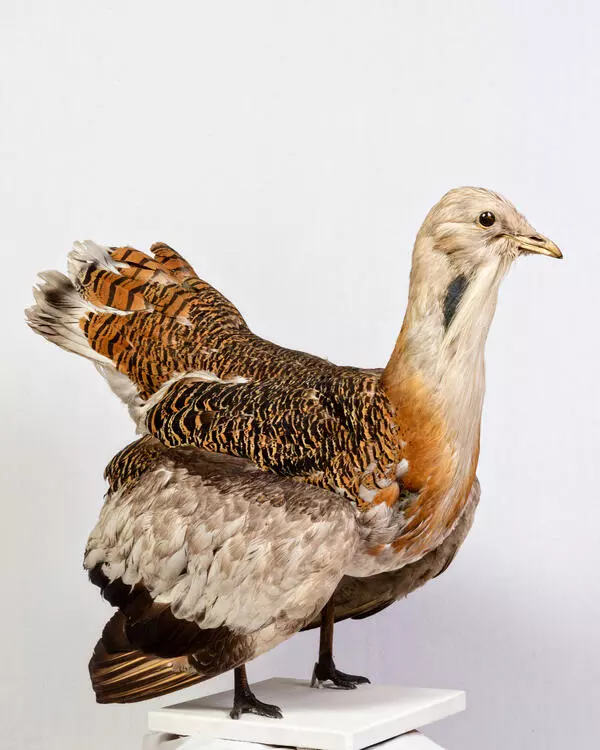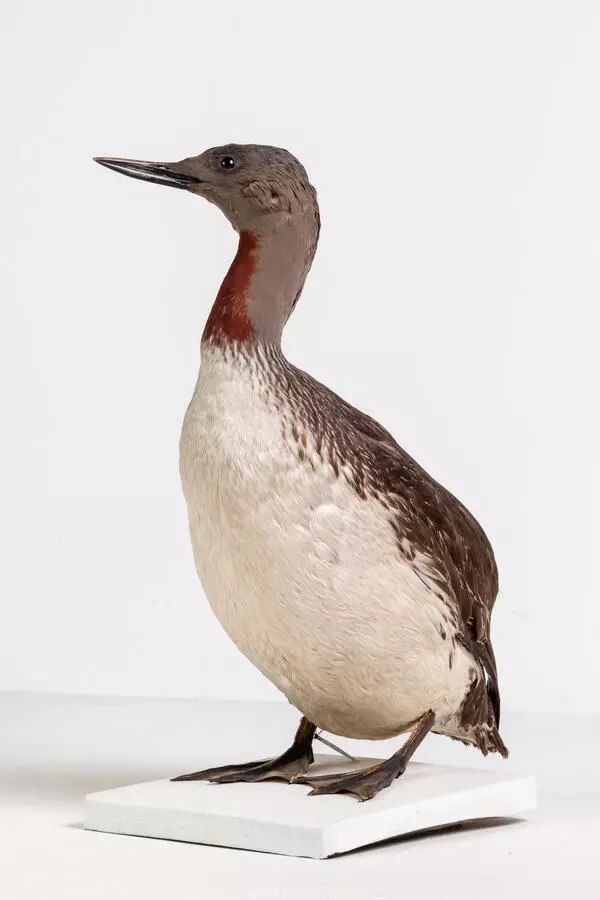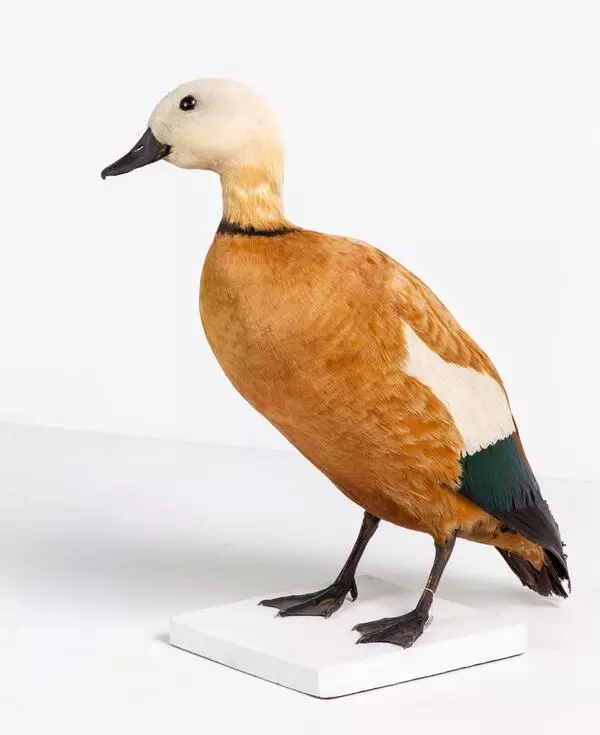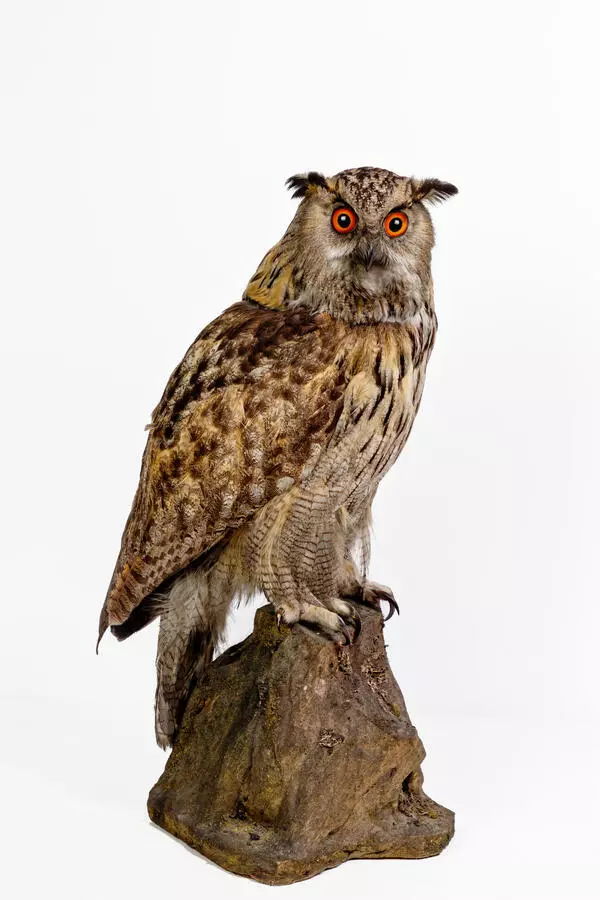It is a rare, migratory, nesting bird. An adult can weigh up to 14 kilograms, and its wingspan reaches more than 2 meters. The swan got its name for its characteristic loud, trumpet calls, which it often emits in flight.
For nesting, the swan prefers large lakes overgrown with high vegetation, as well as remote forest lakes and river oxbow lakes. The whooper swan spends most of its life in the water. When swimming, it keeps the neck straight without bending it in the form of the letter S. They swim slowly and proudly, but in case of danger they can move very quickly.
If the whooper swan is startled, it begins to move away from the pursuer at a great speed, so that it is difficult to catch up even on a boat. From the water, the bird takes off with a long run by flapping its wings heavily and pushing its legs off the surface. Predators do not often attack whooper swans, since these birds are quite large and have great physical strength. Thus, one blow of their wings can break a child’s arm.
These graceful birds have always attracted the attention of people. Swans became heroes of legends and fairy tales, songs and poems were composed about them, and today the swan is considered a symbol of love and loyalty.
Indeed, the swan is a monogamous bird and, having found a partner, stays with it for the rest of its life. Swans do everything together, namely: get food, make flights, hatch, and raise chicks. These brave and strong birds will protect their offspring to the end using their beak and wings actively.
Whooper swans are almost omnivorous. They feed on aquatic plants, small fish, crustaceans, and mollusks. While on the ground, they eat herbs, cereals, seeds, berries, insects, and worms.
Unfortunately, swans have become a popular object of hunting and were almost on the verge of extinction. To preserve the population of swans, hunting them was officially banned, and they themselves were listed in the Red Books in many countries. In addition, swans were kept in city parks. Such measures have produced positive results.
Buryat tribes Hori and Khongodory derive their origin from this bird, thought it was their totem. According to the legend, a brave hunter Horiday took a wife of the heavenly swan maiden by a trick, thus hiding her clothes when she was bathing in the lake. When the children grew up, the heavenly wife still flew into the smoke hole of the yurt. They had 11 sons, from whom there were 11 Khoriny clans. Since then, the Buryats have revered the swan and considered it a sacred bird.
For nesting, the swan prefers large lakes overgrown with high vegetation, as well as remote forest lakes and river oxbow lakes. The whooper swan spends most of its life in the water. When swimming, it keeps the neck straight without bending it in the form of the letter S. They swim slowly and proudly, but in case of danger they can move very quickly.
If the whooper swan is startled, it begins to move away from the pursuer at a great speed, so that it is difficult to catch up even on a boat. From the water, the bird takes off with a long run by flapping its wings heavily and pushing its legs off the surface. Predators do not often attack whooper swans, since these birds are quite large and have great physical strength. Thus, one blow of their wings can break a child’s arm.
These graceful birds have always attracted the attention of people. Swans became heroes of legends and fairy tales, songs and poems were composed about them, and today the swan is considered a symbol of love and loyalty.
Indeed, the swan is a monogamous bird and, having found a partner, stays with it for the rest of its life. Swans do everything together, namely: get food, make flights, hatch, and raise chicks. These brave and strong birds will protect their offspring to the end using their beak and wings actively.
Whooper swans are almost omnivorous. They feed on aquatic plants, small fish, crustaceans, and mollusks. While on the ground, they eat herbs, cereals, seeds, berries, insects, and worms.
Unfortunately, swans have become a popular object of hunting and were almost on the verge of extinction. To preserve the population of swans, hunting them was officially banned, and they themselves were listed in the Red Books in many countries. In addition, swans were kept in city parks. Such measures have produced positive results.
Buryat tribes Hori and Khongodory derive their origin from this bird, thought it was their totem. According to the legend, a brave hunter Horiday took a wife of the heavenly swan maiden by a trick, thus hiding her clothes when she was bathing in the lake. When the children grew up, the heavenly wife still flew into the smoke hole of the yurt. They had 11 sons, from whom there were 11 Khoriny clans. Since then, the Buryats have revered the swan and considered it a sacred bird.
